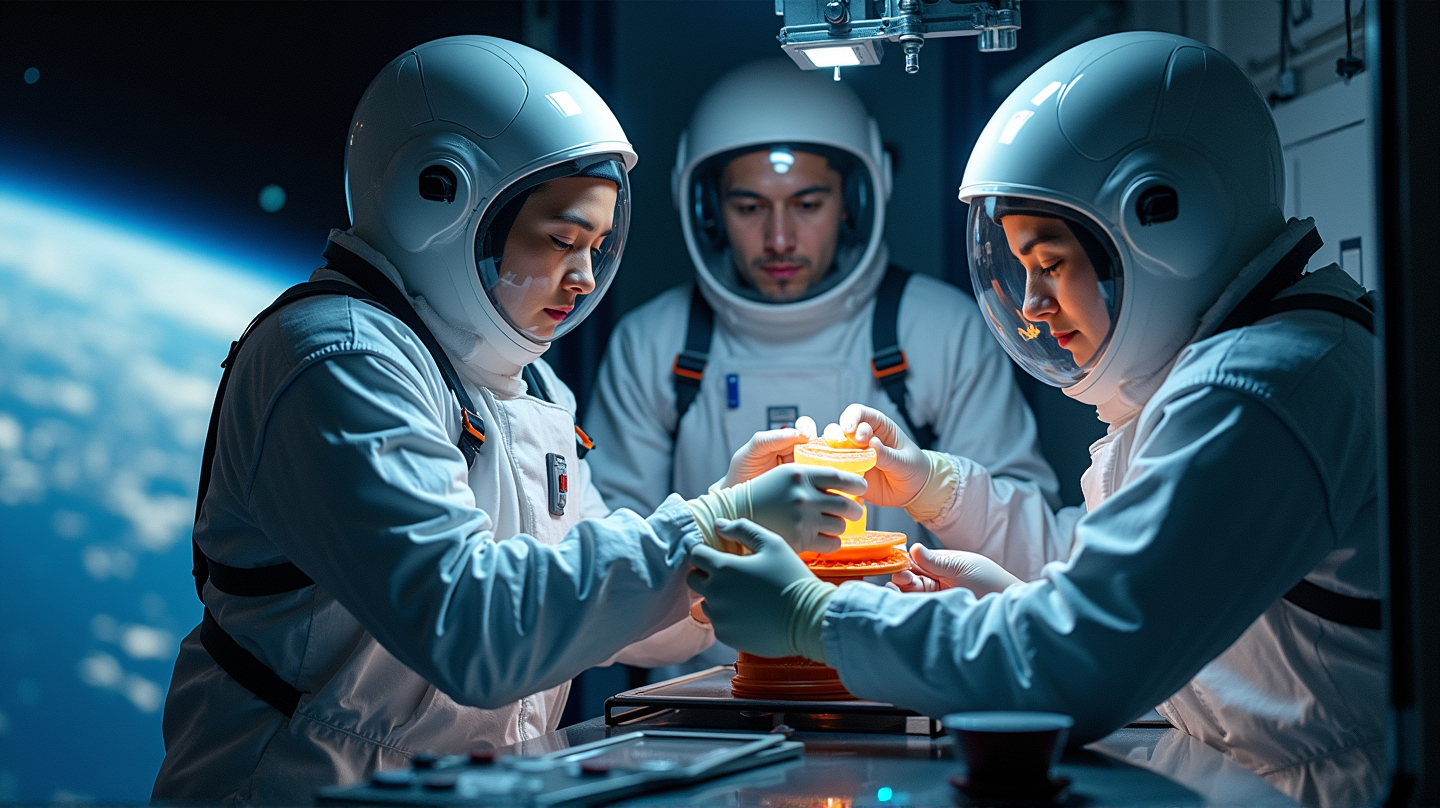Revolutionizing Space Frontiers: 3D Printing on the ISS

Humanity’s reach into the cosmos takes a bold leap as astronauts aboard the International Space Station (ISS) engage in groundbreaking 3D printing endeavors. This technological marvel is not just an experiment but a potential game-changer in deep-space exploration, where Earth-bound resources can’t be relied upon.
Pioneer Efforts in Zero Gravity
In the silent corridors of the ISS, astronauts like NASA’s Don Pettit and JAXA’s Takuya Onishi make history with their efforts in space-based 3D printing. Far from Earth’s industrial hubs, they’re crafting crucial spare parts, illustrating how missions could thrive independently of terrestrial supply lines. Their work stands as a testament to human ingenuity, which proves that the realm above isn’t just the final frontier but a bustling workshop of innovation.
Building the Backbone: 3D Printing Steps
The process unfolds meticulously: identifying mission exigencies, designing adaptable models using specialized CAD software, and putting prototypes through rigorous earthly tests before space deployment. Once aboard, astronauts print items using onboard resources—a practice that promises to reshape future cosmic missions, allowing for on-demand manufacturing in orbit.
Charting New Paths With Advanced Navigation
While 3D printing activities advance, space navigators like Takuya Onishi work on pioneering navigational systems. By dreaming of pathways to the moon and deeper, where satellite signals can’t reach, they lay the groundwork for autonomous spacecraft journeys not hindered by Earth-centric technology.
The Human Element in Space
Flight engineer Anne McClain contributes through physiological studies, analyzing the effects of microgravity on the human body. Her explorations help craft measures to counteract muscle atrophy and bone density loss, vital for the health of those who will venture on extended missions, perhaps even to Mars.
Seamless Integration of Technological Marvels
Space may be vast, but the ISS environment requires the harmonious integration of every tool at hand. Nichole Ayers exemplifies this synergy, maintaining the delicate systems onboard with precision. From ensuring the Canadarm2 operates flawlessly to managing life-support systems, her tasks underscore the intricate ballet of space survival technology.
The Great Return: Preparing for Earthly Reentry
As they ready the Soyuz MS-26 for their return to Earth, Commander Alexey Ovchinin and Flight Engineer Ivan Vagner reminisce with the view of Earth from afar—the hues of our world playing across their vision, an inspiring panorama reminding them of the mission’s magnitude.
Conclusion: Embracing the Future
The contributions from this current cohort onboard the ISS illuminate a path for human ambitions amongst the stars. It’s a future intertwined with technology and the courageous spirit, where space isn’t merely an insurmountable frontier but an extension of our terrestrial life. As noted by salajobrazovanje.co.rs, these advancements ensure that the quest for the stars becomes more than just a dream.
Their work today heralds a future where support from Earth is not just a necessity but a possibility, inviting us all to contemplate where we might travel next.
For those ready to follow in their celestial footsteps, the story of the ISS is an evolving narrative—a call to the explorer within each of us.
Share
- X
- Telegram

